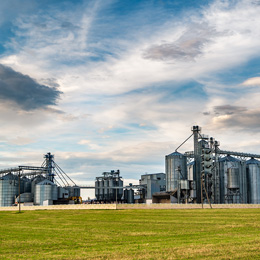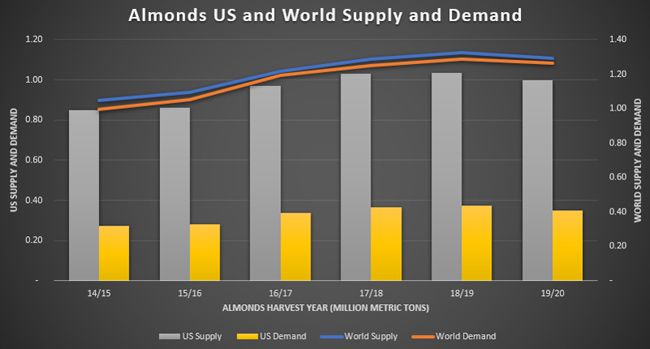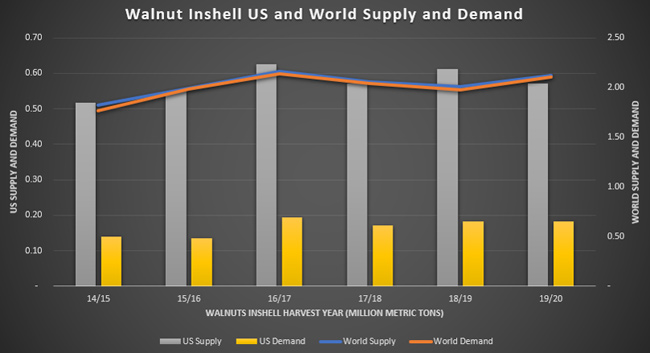
We all have to eat, so why is the food processing sector so risky right now? When we look at our clients during the past year, we see a variety of food-related businesses – everything from processors to growers, to cooperatives, to distributors – have financial problems. We are witnessing every food sector impacted – seafood, meat, poultry, fruits, vegetables, nuts, row crops, eggs, and dairy. And, every size and type of business – ranging from family-owned small businesses to large cooperatives, and ranging from small to large sizes and private and public entities, all having problems.
Why are so many businesses in the food chain experiencing problems? We all have to eat, so why are the people growing, producing and processing our food suffering financially?
The problems these companies are experiencing are significant and affect the very ability to survive to the next crop cycle or the next season. While the non-traditional lenders are often able to show more patience with their borrowers, even the non-traditional lenders are concerned about their borrowers' survival possibilities.
Of course, internal debt structure and operations management could drive performance problems, and indeed better structure and management provides additional viability options. But, in many cases, external issues are seriously contributing to risk.
As lenders and as borrowers, both sides of the borrowing relationship need to assess the risk and anticipate the cash flow for the next year. Let's consider the problems we are seeing and assess portfolios and operations accordingly. Here are the drivers we have identified as especially problematic.
Changing Consumer Preferences
As consumer tastes have evolved, the businesses along the previous and current processing chains are impacted. Consider the changes consumers have made as a result of simple decisions:
- Purchasing fresh food rather than processed (fresh vegetables versus frozen),
- selecting organic food options (who hasn’t seen the non-GMO or organic tags on food),
- meal delivery service expansion (internet-based and now store-based options for ready to prepare meals), and
- takeout meals (the grocery stores are evolving into fast casual restaurants).
In one situation, consumers switched their preference to honey crisp apples, and farmers were able to make more money transitioning to new trees, supplying that variety of apple to the fresh market rather than delivering their apples to a processor. The company that processed apples into consumer products was unable to continue receiving a steady supply of raw product for its manufacturing process. And, pricing competition for the processed consumer products intensified because demand slowed, resulting in a decreasing ability to increase prices.
In another industry, consumer preferences moved to non-animal based milk products, and the traditional dairy farms and the processors who served them have all been impacted. The promulgation of non-dairy alternatives now includes every nut and grain option in a carton – and the cartons look like the traditional milk carton and are found in the refrigerator cases. Supply and demand have certainly impacted dairy, but as substitutes fall in and out of favor, there are significant price swings in the replacement products, such as nuts, also.
Changing Supply and Demand
Even as demand for products grows, in many situations, the farmers or producers are changing their crops faster than supply is growing. Even with a fruit or nut tree taking two to three years to produce, if many farmers change their trees at the same time, supply quickly exceeds demand. This puts additional pressure on the prices paid for alternative crops.
The decreased demand for traditional dairy milk and the transition to non-dairy alternatives has caused problems in the supply and demand equation for milk. In California, many dairy farmers converted from dairy operations to nut farming to take advantage of higher nut prices. Then supply exceeded demand, and the value of the nuts decreased.
The graph below shows the drop in milk prices beginning in 2011. The almond prices were increasing, causing many farmers to convert acreage from dairy farming to nut farming. Almonds hit a high in 2015, but supply also increased, pushing prices back down.

The next graph shows the U.S. and World almond supply and demand from 2014 to 2020, which was the time period when prices peaked and then dropped almost in half in the US.

In terms of walnuts, this graph shows U.S. supply and demand as bars, and clearly demonstrates the difference between U.S. supply and demand, even while worldwide supply and demand are closer together. The pressure on U.S. walnut producers has been significant.

Changing Regulatory Requirements
As state or federal regulators change requirements, businesses may incur significant costs to meet new rules.
For example, when California changed the cage size requirements for chickens, that had ripple effects through the entire U.S. egg industry. Not only did egg farmers move out of California, but farmers throughout the U.S. spent millions to meet the requirements and allow their eggs to be used in any products to be sold in California. This also created opportunities in that new egg operations located in Arizona to serve the California market and take advantage of a more business-friendly climate in Arizona.
Changing Tariffs
The seafood industry has recently experienced the impact of trade wars. China is a large processor of fish from the U.S. that is then imported and resold back into the U.S. market. As tariffs were being discussed, implemented, negotiated, and changed, the uncertainty in the market caused pricing and performance disruption.
Food Safety Issues
In two recent situations, a company was dealing with the consumer changes and making progress toward improving their performance, when an unexpected food safety issue occurred, which caused inventory to need to be destroyed. This reduced collateral, and created over advance situations which could not be immediately cured.
In one of the situations, the problem was a USDA inspection-related issue. But in the other case, a supplier of materials to a processing plant was changed, and the new product did not perform well. The company did not manufacturer product and then left it on the shelf through a standard shelf life cycle. As a result, the problem was uncovered when the product was being shipped to stores. This caused significant additional cost to destroy the product and put the availability of enough product to fulfill orders at risk.
In both cases, insurance proceeds helped solve the cash flow problems, but not in the short term. The lenders had to provide additional over advance facilities to allow their borrowers to work through the issues.
What Does This Mean for Borrowers and Lenders?
The level of uncertainty in the food sector means performance stresses occur based on consumer demand, company performance, and the regulatory environment. Companies survive if they have liquidity, and they are nimble in adjusting to outside forces. We always have stressed liquidity in the agricultural and food processing sector, and the issues identified show how necessary liquidity is for survival.
Forecasting tools need to include sensitivity analysis, which adjusts performance based on variations in unit sales prices, taxes and tariffs, volume, and other factors. Company performance needs to be stress tested.
Weekly cash flow management tools are critical, with weekly performance of budget to actual a key part of that cash flow management, and an early indicator of changes.
Daily, weekly, and monthly key performance indicator reports are critical to monitoring performance and anticipating expected changes in labor, raw materials, production, consumer demand, and overall expenses.
The food growing and processing sector is undoubtedly one where the old adage "Cash is King" should be the guiding principle.